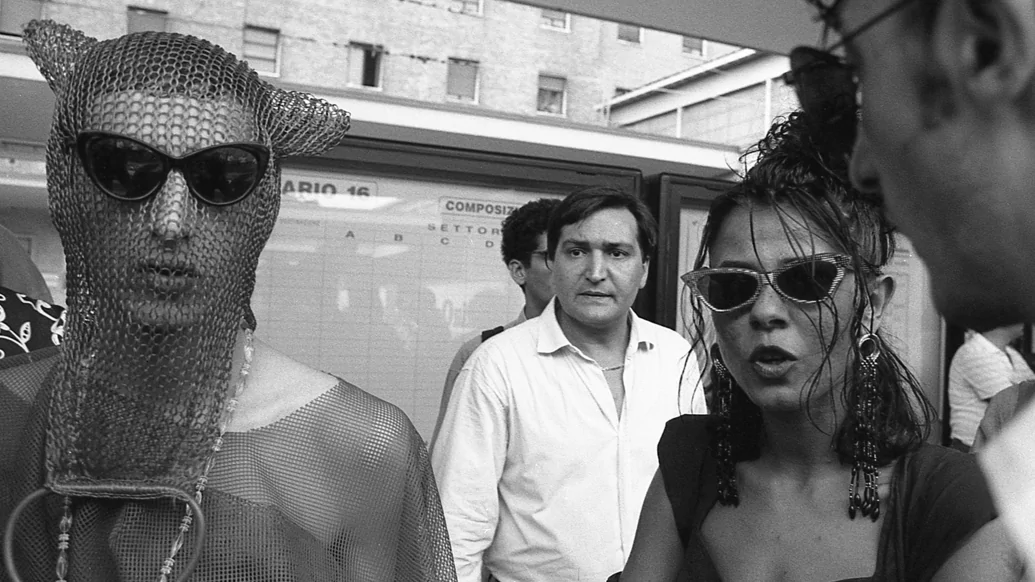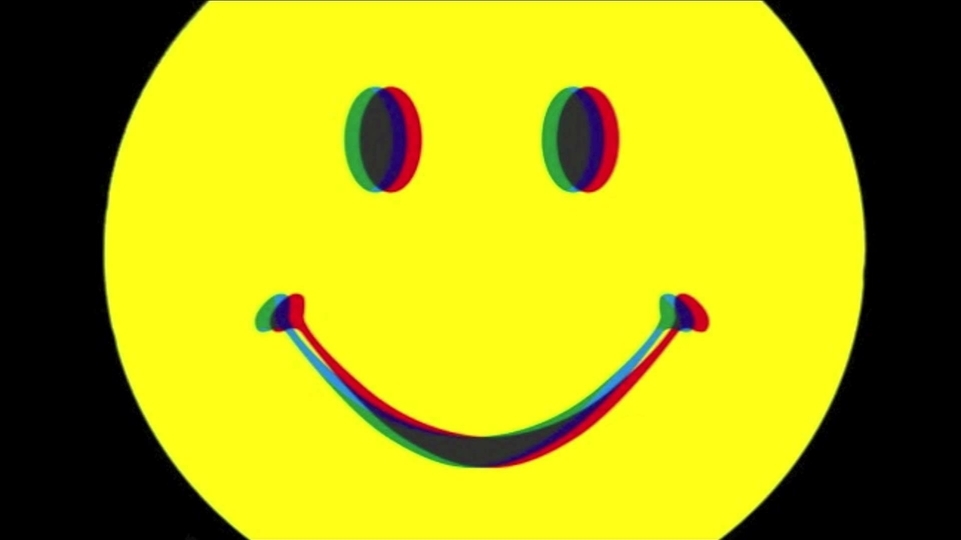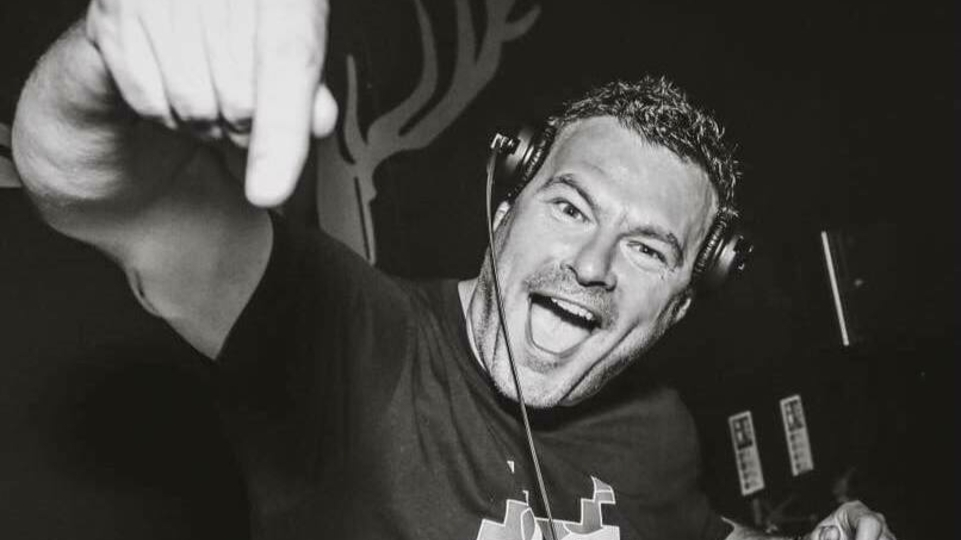
These photos capture the ecstatic spirit of early '90s UK raving
Tony Davis’ visceral photography doesn’t just capture what the UK’s early ‘90s rave culture looked like, it also manages to conjure up what it felt like. Here, Simon Doherty interviews him about his fanzine, UK Rave 1991, which documents the ecstatic spirit and irrepressible indulgence of regional partying
Photographer Tony Davis’ adult life has been dedicated to chronicling culture surrounding Northern Soul all-nighters, football terraces, football casuals, free party collectives and acid house raves. He also recently released a fanzine, UK Rave 1991, which documents the ecstatic spirit of clubbing outside of the capital.
Here he talks us through some of his photos taken in 1991 as the music, fashion and culture surrounding acid house had flourished and permeated pretty much every town in England. He focused on the regional scenes — lost nights in small clubs in Nottingham and Coventry and forgotten mornings at service stations.
These micro-scenes operated within the wider youth culture movement. They might not be as well-publicised as the orbital raves, Shoom, Spectrum, or The Haçienda, but they encapsulated every bit of the irrepressible indulgence and unrestrained hedonism spawned by the birth of electronic music culture.
DJ Mag asked Davis to talk us through some of the pictures from UK Rave 1991.


“This was a Friday night, downstairs in Venus, a Nottingham club. It was the night that Rozalla, ‘Everybody’s Free’ played, she did a short PA and the whole thing went up. This picture was taken around one in the morning. I think it went on until two or three, it wasn’t an all night thing.
“This is club ecstasy, isn’t it? I never really liked pictures where people were looking at the camera. I like people who look lost. But when people see this they buzz off it. This is what clubbing is about; there's no cameras, no nothing – just the moment.
“It was working class people, almost post-casual culture. Just into clothes. Nottingham was a really big clothes town, because they had Paul Smith and lots of shops. Even people from working class backgrounds would spend a lot of their wages on clothes.
“I guess it's endemic to a lot of towns. The way they live; they're not in huge houses with lots of Porches but they dress up, because that's the thing that's accessible. He’s got a Destroy top on, he’s got a waistcoat that probably cost £150, they’ve got a Keith Haring top. They’re all dressed up, they're only there for a few hours and they probably only really go for it for about an hour.”

“An old can of Tango, wearing Joe Bloggs, smoking in a club — that’s what it was about. This was eight hours of sweat, people had bold logos, bright clothes and often would be stripped to the waist because it was so hot. Ravers dress to dance. People just wanted something loose. Joe Bloggs was a bit of a market trader’s shirt.
“We also saw a lot of outdoor wear, Berghaus, hats with tassels on, Adidas and Puma trainers, kickers, brightly-coloured badges and things like that. It was a real mixture of baggy, youth fashion. I would stand there just dancing with the camera round my neck. I was pretty quick; the first thing to do is get all the steam off the lens then make sure the camera is set and wait. I’d come in really close, take a shot, then drop off, disappear and go to another bit [of the dancefloor].”


“We were outside talking and this car was leaving. Bizarre Inc’s ‘Playing With Knives’ was coming out of this tinny little Argos music box. These lads were just coming by, they'd been to Shelly’s and they were leaving the service station. I heard the music and went over to the car and got a snap. It was a Chevette, all rusty and battered.
“The guy in the back [behind the passenger seat], his name is Jay. He got in touch and said to me, ‘This was the best night of my life. I cannot imagine anybody understanding if I tried to tell them how we got there and where we went.’
“This guy [sat behind the driver, with the stereo]'s nickname was Cossack. He died about 10 years ago, something like that. So that became a bit of an emotional thing for him as it’s a picture of his mate. You can see this guy lived a bit. How he ended up, I don't know. But if you don't do this in your youth, what are you gonna tell your kids and grandkids? What will you have to look back on? I look at these people and think: they lived.

“The service stations were pre and post-clubbing socials. The clubs would finish at two or three. People would go there and congregate. They were hanging out talking, smoking, swapping stories, drinking coffee and pissing about. But very few people were eating.
“Service stations were a chance to socialise. Some people would say that Sandbach Services or Knutsford Services was the best part of the night. We’d hang out and get to know people from all around Birmingham, Carlisle, Worcester, or whatever — they all came from different places.
“I went with some DIY guys who ran some raves in Nottingham. They said, ‘i-D magazine wants to do a feature on the service stations. Do you want to photograph?’ I only had a couple of rolls of film on me. I told them that I’ve got no money and they said that they’d give me a lift and get me into Shelly’s Laserdome [in Stoke-on-Trent].
“It would become a part of the night that people would look forward to. I'd say that it was just as important as the rave, so I’m glad that I captured it. Loads of people have said that they remember going to Sandbach Services or Knutsford Services. This was a post-rave gathering. She was doing media and journalism in college and was laughing and joking. She asked, ‘Can I get a picture?’ I took two pictures next to there, one of them got used in i-D.”


“This was Amnesia in Coventry, there’s lots going on. There’s a bucket hat from Mo' Better Blues the film, a Naf Naf t-shirt, and that [the person in the middle with a blue tee] is the famous thermal t-shirt that changes colour in the heat.
“I was looking for people who were expressive. I saw this girl and just waited for the music to lift when her arms went up. There's a platform people are dancing on behind them. Not a smiley t-shirt in sight, that disappeared quite quickly, I think it was a Shoom thing. You didn’t see any smiles or Vicks Vaporub or Altern-8 masks in 1990 or 1991.
“She's probably lost on her own at that moment. That was the thing about Northern Soul, you just carved out a space and danced. I never like going with people, girlfriends or whatever, to all-nighters. You don’t want anyone bothering that space and that devotion. I just want to dance. I want to be left alone. My girlfriend says, ‘Enjoy the party.’ But it’s not a party, it’s like going to work, it’s a shift. And these people are doing a shift — but it’s a euphoric shift.”

“In 1991, people were trying to find somewhere new to party. Rimini [in Italy] was an experiment, like Ibiza was in the 1980s. It had this glass pyramid called Cocoricò, and a great network of other clubs. So Italy became a new clubbing place and Italian house was just becoming big. I worked really hard on shooting it all and got loads of magazine features.
“I was told about a rave on a train — called House Train — right across Italy. The backstory was that people were driving across Italy to clubs in Rimini and driving back off their nut. A couple of kids had died in crashes, so the train unions backed an idea where they’d drive a special train across Italy. Each carriage had different music — techno, Chicago house, Italian house, soulful garage. I had no money, so I went to these newspapers and told them that I've got this great story. They said, ‘Yeah? Go and do it.’ So I sold my mountain bike and everything I had just to get there.
“It wasn’t cheap for a ticket, but it was all organised and sorted. But when I got there there were loads of Italian press. I was gutted, I thought it’d be just me. For the press, it was a news story. Although there were very few around by the end of the night, a lot of them just photographed in the station.
“This was before they set off at the beginning. This is a journalist [right], these are obviously clubbers [left and second from the right], and I think that's a train driver [middle]. I have no idea what happened there. He just put that bag on his head. Only an Italian could style out a carrier bag and turn themselves into a cat.”


“I think the train was the best bit. They were like partying on the train, you can see there's some real moments. That was the party carriage, with no chairs and stuff. You can see the joy in this picture. I liked this carriage, they had the best house music and this group of people were dressed up and partying a lot. When we pulled into a station, the music was pumping out and they were hanging out of the train.
“This girl [on the left] has been in touch since. She said, ‘Look how beautiful we were when we were young.’ This is 30 years on. The young people that are going to raves were just doing what the generation of Northern Soul kids, and other generations, did. Living a twilight alternative life to escape and explore and indulge and enjoy. And to connect to some music.
“I’ve still got the ticket and the flyer for it. There were about five little tabs on the ticket — one that got ripped off when you got on the train, went into the club, after a drink, and they said the final corner was a tab of acid. I’ve still got it, they didn’t rip mine. It’s probably evaporated by now.”

“What goes up must come down, he’s obviously grimacing a bit and struggling. The guy on the platform is laughing his head off. I don't think he's laughing at him, he's just laughing. He’s obviously got up at seven in the morning and thought who are these nutters on this train? Where are they going? Where are they coming back from?”
Check out Tony’s recent fanzine, UK Rave 1991, here.






